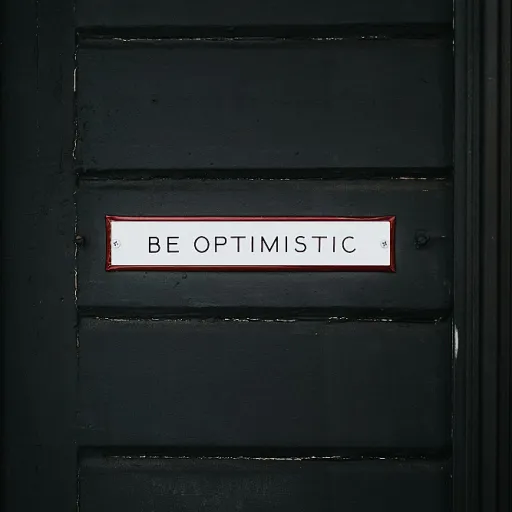
Defining adverse impact analysis in the workplace
What is adverse impact analysis?
Adverse impact analysis is a critical process in the workplace that helps employers identify whether their employment practices, such as hiring, promotion, or termination, unintentionally discriminate against protected groups. This analysis is grounded in legal frameworks like Title VII of the Civil Rights Act and the Uniform Guidelines on Employee Selection Procedures, which require organizations to ensure their decisions do not disproportionately affect individuals based on protected characteristics such as race, gender, or age.
Why does adverse impact matter?
Understanding adverse impact is essential for employers to minimize the risk of discrimination claims and legal liability. When employment decisions result in a disparate impact—meaning a selection rate for a protected group is significantly lower than for others—it can signal potential issues with compliance. The "four-fifths rule" is often used as a benchmark: if the selection rate for any protected group is less than 80% of the rate for the group with the highest selection rate, there may be evidence of adverse impact.
- Disparate impact refers to policies or practices that appear neutral but have a negative effect on a protected group.
- Disparate treatment involves intentional discrimination against individuals based on a protected characteristic.
- Business necessity and job consistent requirements are defenses employers can use if a practice is shown to be essential for the role.
Key elements of the analysis process
Adverse impact analysis relies on data-driven methods to compare selection rates across different groups. Employers must collect and analyze employment data, looking at how decisions affect various protected groups. This process often involves:
- Reviewing selection rates for each employment decision
- Identifying any significant disparities between groups
- Assessing whether the process or policy causing the disparity is justified by business necessity
- Considering alternatives that could reduce adverse impact while still meeting business needs
With the rise of artificial intelligence in employment practices, the risk of unintentional adverse impact has increased, making robust analysis even more important. Employers must be vigilant in monitoring their selection processes to ensure compliance and fairness.
For organizations aiming to foster a culture of equity and compliance, mastering the fundamentals of adverse impact analysis is a vital step. If you are interested in how technology and training can support these efforts, explore this resource on enhancing corporate culture through effective training.
How corporate culture influences adverse impact
How Values and Norms Shape Adverse Impact
Corporate culture is more than just a set of shared values or mission statements. It’s the underlying system of beliefs, behaviors, and unwritten rules that guide how employment decisions are made. This culture directly influences the risk of adverse impact and disparate treatment in the workplace, especially when it comes to selection processes, employment practices, and compliance with legal standards like Title VII and executive orders.
When a company’s culture prioritizes transparency, fairness, and data-driven analysis, it’s more likely to identify and address potential discrimination or disparate impact before it becomes a liability. On the other hand, cultures that lack clear policies or rely on subjective decision-making may unintentionally create barriers for protected groups, increasing the risk of adverse impact and legal exposure.
- Selection Rates and Group Outcomes: The way a company’s culture shapes its hiring, promotion, and other employment decisions can lead to different selection rates for protected groups. If certain groups consistently have lower selection rates, this may indicate a disparate impact, even if there was no intent to discriminate.
- Policy Development and Enforcement: A culture that values compliance and ethical standards will often have robust policies to minimize adverse impact. This includes regular adverse impact analysis, monitoring selection rates, and ensuring employment practices are job consistent and business necessity is documented.
- Use of Technology: As artificial intelligence becomes more common in selection processes, the risk of adverse impact can increase if algorithms are not carefully monitored for bias against protected characteristics. A culture that encourages critical review and ongoing analysis of these tools can help prevent disparate impact and reduce liability.
Employers who foster a culture of accountability and continuous improvement are better positioned to address adverse impact proactively. This means not only complying with legal requirements like the fifths rule or affirmative action but also embedding equity into everyday business decisions. For organizations seeking to unlock the potential of strategic compensation in corporate culture, aligning pay practices with fair and transparent processes is a key step toward minimizing risk and supporting protected groups. For more on this, see unlocking the potential of strategic compensation in corporate culture.
Common challenges in conducting adverse impact analysis
Barriers to Accurate Adverse Impact Analysis
Conducting adverse impact analysis in the workplace is a complex process. Employers face several obstacles that can hinder accurate identification of disparate impact and discrimination risks. These challenges can affect compliance with Title VII, executive orders, and other legal requirements designed to protect groups from unfair employment practices.
- Data Limitations: Reliable analysis depends on comprehensive, accurate data about employment decisions, selection rates, and protected characteristics. Incomplete or inconsistent data can obscure patterns of disparate impact, making it difficult to identify potential liability or compliance issues.
- Complexity of Employment Practices: Many organizations use layered selection processes, such as multiple interviews or assessments. Each stage can introduce risk for adverse impact, especially if not all steps are job consistent or validated for business necessity.
- Changing Legal Standards: Laws and regulations evolve. The fifths rule, for example, is a common benchmark, but courts may interpret disparate impact and disparate treatment differently. Employers must stay updated to avoid legal exposure.
- Bias in Artificial Intelligence: As more employers use AI in hiring, there is increased risk that algorithms may unintentionally create adverse impact against protected groups. Regular audits and transparent processes are necessary to mitigate this risk.
- Cultural Blind Spots: Corporate culture can influence which employment practices are prioritized or overlooked. If a culture undervalues diversity or compliance, policies may unintentionally disadvantage certain groups, increasing liability and risk of discrimination claims.
Common Pitfalls in the Analysis Process
Even with the best intentions, employers can fall into traps that undermine the effectiveness of adverse impact analysis:
- Overlooking small selection rate differences that may still be significant for protected groups
- Failing to document the business necessity for specific employment practices
- Neglecting to compare selection rates across all relevant groups, not just the majority and one minority group
- Assuming compliance because of affirmative action policies without ongoing analysis
These challenges highlight the importance of a proactive, data-driven approach to compliance and risk management. For a deeper look at how national initiatives can shape corporate culture and influence these challenges, explore this analysis of national nonprofit day’s impact on corporate culture.
Strategies for minimizing adverse impact through cultural change
Transforming Policies and Practices to Reduce Risk
Minimizing adverse impact in the workplace is not just about compliance with legal requirements like Title VII or the executive order on affirmative action. It’s about creating a culture where employment decisions are fair and equitable for all protected groups. Employers need to look beyond the numbers and selection rates to address the root causes of disparate impact and discrimination.- Reviewing Employment Practices: Regularly analyze selection processes, such as hiring, promotions, and terminations, to identify patterns of disparate treatment or disparate impact. Use data-driven impact analysis to ensure that selection rates for each protected group meet the four-fifths rule, reducing the risk of impact liability.
- Updating Policies: Adjust policies that may unintentionally disadvantage a protected group. For example, ensure that job requirements are truly job consistent and reflect business necessity, not just tradition or convenience.
- Leveraging Technology: While artificial intelligence can streamline employment decisions, it can also introduce bias. Employers should audit AI tools for compliance and fairness, ensuring they do not create new risks of adverse or disparate impact.
- Training and Communication: Educate managers and HR professionals about the legal and ethical implications of their decisions. Clear communication about the importance of equitable practices helps embed these values into the corporate culture.
- Affirmative Action and Accountability: Implement affirmative action plans where appropriate, and set measurable goals for improving selection rates among underrepresented groups. Regularly monitor progress and adjust strategies as needed.
The role of leadership in fostering equitable practices
Leadership’s Influence on Equitable Employment Practices
Leaders play a pivotal role in shaping how organizations address adverse impact and discrimination in employment decisions. Their commitment to fairness directly influences the effectiveness of policies and processes designed to minimize disparate impact and legal liability. A strong leadership approach ensures that compliance with regulations such as Title VII and executive orders is not just a checkbox exercise. Instead, it becomes embedded in the organization’s culture, guiding how selection rates, employment practices, and group decisions are made. When leaders actively support data-driven impact analysis and transparent communication, they help reduce the risk of adverse impact and disparate treatment across protected groups.Key Actions Leaders Can Take
- Championing Data Transparency: Leaders should encourage regular analysis of selection rates and employment practices, using data to identify patterns of disparate impact or discrimination among protected groups.
- Setting Clear Expectations: By establishing policies that prioritize business necessity and job-consistent criteria, leaders help ensure that employment decisions are fair and defensible.
- Promoting Inclusive Decision-Making: Involving diverse perspectives in the selection process reduces the risk of unconscious bias and supports compliance with the fifths rule and affirmative action requirements.
- Investing in Training: Ongoing education about legal standards and the use of artificial intelligence in employment decisions helps employers avoid adverse impact liability and disparate treatment claims.
- Holding Teams Accountable: Leaders must regularly review group outcomes and adjust policies to address any identified risks, ensuring that all employment practices align with compliance standards and protect every protected characteristic.
Measuring progress and maintaining accountability
Tracking Outcomes and Ensuring Ongoing Compliance
Once organizations have implemented strategies to minimize adverse impact and foster equitable employment practices, it’s crucial to measure progress and maintain accountability. This process is not just about checking boxes for compliance; it’s about ensuring that employment decisions, policies, and processes consistently support fairness for all protected groups.
- Data-Driven Monitoring: Regularly collect and analyze data on selection rates, promotions, and other employment decisions. Comparing these rates across different protected groups helps identify any disparate impact or disparate treatment that may arise over time.
- Applying the Four-Fifths Rule: Use the four-fifths rule as a benchmark to evaluate whether selection rates for a protected group are less than 80% of the rate for the group with the highest selection rate. If disparities are found, further analysis is needed to determine if there is a business necessity or if changes to the process are required.
- Legal and Regulatory Compliance: Stay updated on requirements under Title VII, executive orders, and affirmative action regulations. Employers must be vigilant to avoid liability for adverse impact or disparate impact, especially when using new tools like artificial intelligence in selection processes.
- Transparent Reporting: Share findings and progress with stakeholders. Transparency builds trust and demonstrates a commitment to reducing discrimination and risk in employment practices.
- Continuous Improvement: Use insights from impact analysis to refine policies and procedures. Regular reviews help ensure that employment practices remain job consistent and do not unintentionally disadvantage any protected characteristic or group.
Accountability is a shared responsibility. Employers, HR teams, and leadership must collaborate to ensure that compliance is not a one-time event but an ongoing commitment. By embedding these practices into the corporate culture, organizations can reduce the risk of impact liability and foster a more inclusive workplace for all groups.













